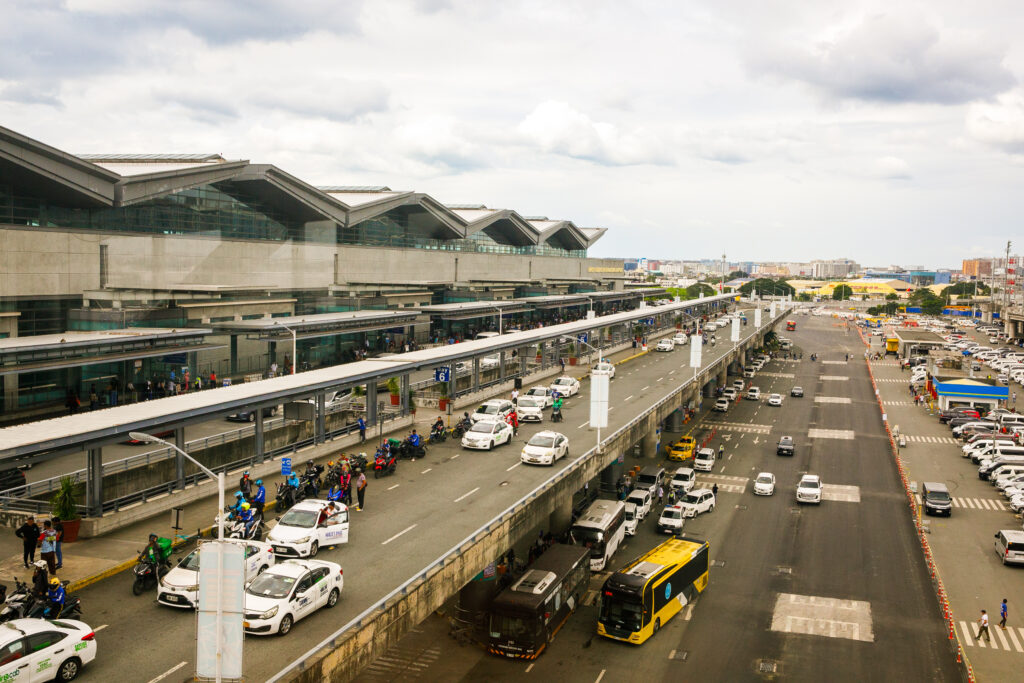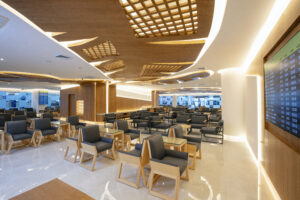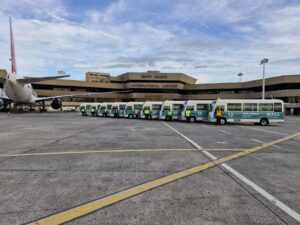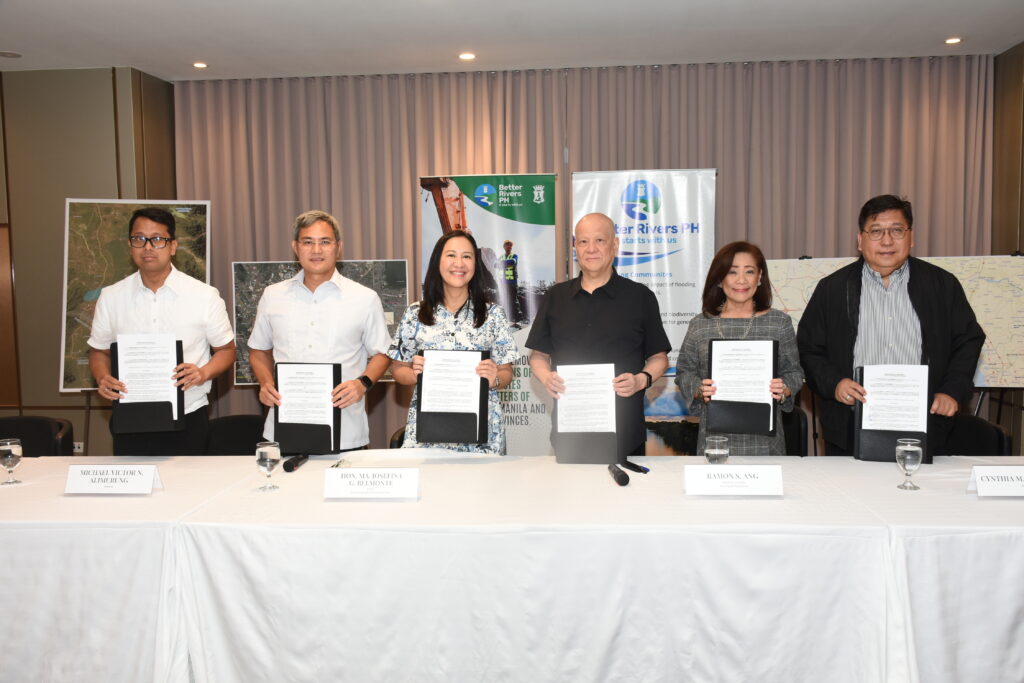On September 14 of last year, San Miguel Corporation, headed by Chairman Ramon S. Ang, officially took control of the management of the Ninoy Aquino International Airport Complex through its subsidiary, New NAIA Infra Corp or NNIC.
After more than 10 months, what changes have been made? Has it made air travel easier and more convenient for the millions of Filipino air travelers?
We reached out to friends over at SMC, and they gave us the rundown of changes:
Improved Passenger Experience
– A new dedicated OFW Lounge at Terminal 3, with 24/7 access offering free meals, drinks, Wi-Fi, and charging stations.
– A dedicated OFW-only Immigration area.
– 2,600 seats installed across the three terminals.
– Over 20 new and well-known food concessionaires at the arrival and mezzanine halls in Terminal 3 (the busiest terminal).
– Renovated toilets, including toilets for passengers with reduced mobility (PRM / PWD) and gender-neutral facilities.
– Construction of new bus gates at Terminals 1 and 2 to increase overall passenger seating and improve boarding for remote stands.
– Terminal 1 East Satellite: 3 gates with 540 additional seats; West Satellite: 2 gates with 360 additional seats.
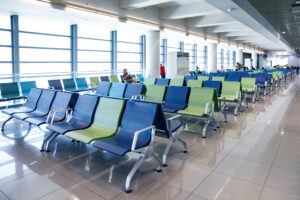
Access, Mobility & Parking
– Centralized Ride-Hailing Hub at Terminal 3 (6,000 sqm; 401 dedicated parking slots; 18 loading bays) to give passengers a faster and more convenient way to book transport to/from the airport.
– Widened curbsides and added more drop-off/pick-up lanes across all terminals to ease congestion and traffic flow.
– Concreting of T3 surface parking area (previously a grassy and uneven open space).
– 20 new mini-buses deployed for seamless inter-terminal transfers every 15 minutes.
– Deployed more new ambulances equipped with the latest medical technology and “Follow Me” vehicles to support safe and efficient airport operations.
– Locker rooms for ground personnel.
– New Lost & Found facility at T1 apron level.
– New cafeterias at Terminals 1 and 3 that serve affordable meals to hundreds of airport staff.
– More staff cafeterias are planned across terminals.
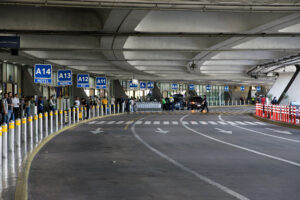
System Modernization in Partnership with Collins Aerospace
– Integrated key airport systems with phased rollout through September 2025 to modernize NAIA’s operational backbone—from flight data and gate coordination to baggage handling and apron management: Airport Operational Database (AODB), Resource & Apron Management, Local Departure Control System (LDCS), Baggage Reconciliation, and Flight Info Display (FIDS).
Facilities Upgrade & Terminal Comfort
– Installed new air conditioning equipment: PACUs at T1, modified AHUs at T2, and new chillers at T3.
– Improved reliability of the existing baggage handling system, and replacement of five (5) outdated Explosive Detection Systems is underway.
– Upgraded walkalators, escalators, and elevators across terminals.
– Restored idle passenger boarding bridges to operational use at T3.
– Deployed 2,500 new baggage trolleys across Terminals 1, 2, and 3 to improve baggage handling and passenger convenience.
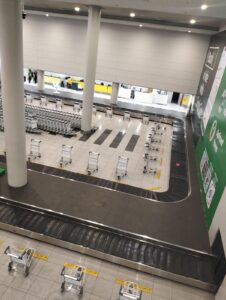
Connectivity & Digital Convenience
– Free Wi-Fi upgraded to 50–60 Mbps, accessible for 3 hours with no personal information required.
– Bandwidth infrastructure boosted from 1G to 10G to support next-gen digital systems.
– Launched the new NAIA website and official social media pages for timely updates and improved passenger communication.
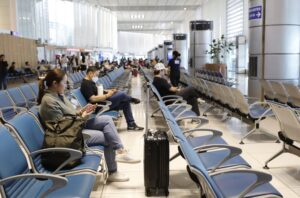
New Airlines and International Routes Opened
-New airlines like Air France, Air Canada, Vietjet Airlines started operations in NAIA while several existing carriers expanded operations.
-New international routes opened include Seattle, Brisbane, Paris (CDG), Sapporo, Vancouver, Da Nang while New Delhi in India is expected to be online in August 2025
-New regional and domestic routes launched include Chiang Mai and Cauayan.
– United Airlines’ second daily non-stop flight to San Francisco will be on line in October 2025

Flight Operations, Slots & Runway Management
– Handled 50.12 million passengers in 2024, exceeding NAIA’s original 35 M design capacity.
-Approved more cargo flight slots (from 3 to 5 per week) for compliant freighter operators.
-For implementation: Optimized General Aviation (GA) slots in coordination with CAAP to accommodate more international and commercial traffic.
– Implement single entry and exit processing for both domestic and international General aviation flights to strengthen security and streamline airport coordination.
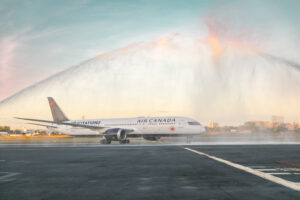
Ongoing & Future Works
-Terminal 4 renovation is underway
-Terminal 5 development ongoing, with demolition of the old Philippine Village Hotel already in progress. Construction will start in January 2026, with target completion by January 2028. This will enhance NAIA’s capacity to 62 million passengers.
– The goal is to increase Air Traffic movement from 40-42 movements per hour to 48 movements per hour.
-New concession plans in the pipeline to expand food, retail, and passenger lounge offerings across all terminals
Power, Resilience & Environment
– Completed power redundancy upgrade via a new Meralco feeder line (Dec 2024).
– Direct connection to the grid to ensure long-term energy stability.
– Developing an underground 115kV substation to stabilize power across all NAIA facilities.
– Launched a river cleanup initiative around NAIA to mitigate flooding risks. Over 193,000 metric tons of waste have been cleared from 4 kilometers of surrounding rivers and esteros to help keep the airport flood-free.
– Adopted a green cleaning policy, using non-toxic, eco-certified products and efficient equipment as part of its broader sustainability efforts.
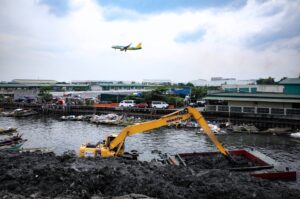
The NAIA Public-Private Partnership is expected to generate PHP911 Billion in total economic value during the course of San Miguel’s 15-year stewardship of the airport (extendable by a further 10 years).
Over the course of its contract, San Miguel Corporation’s New NAIA Infra Corp will be investing upwards of PHP 170 Billion for NAIA’s upgrade and modernization while PH government retains 82.16% of revenues.
To date, NNIC has remitted close to PHP40Billion to the Manila International Airport Authority as of April 15, 2025.
The environmental improvements will also benefit not just the NAIA Airport complex itself but the surrounding residential communities in Paranaque and Pasay as well as the general Metropolis.
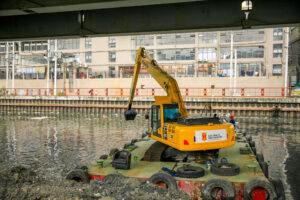
While much has already been done, Mr. Ang remains emphatic that more changes are to yet to come, and with more plans and improvements being studied to further improve airport operations and ultimately, passenger experience. For an airport originally designed to handle an annual 35 Million passenger capacity, the outdated complex was already seeing 50 Million passengers prior to the COVID pandemic. Hopefully we shall see far greater improvements in passenger movement over the coming months as the NNIC rolls out even more improvements.
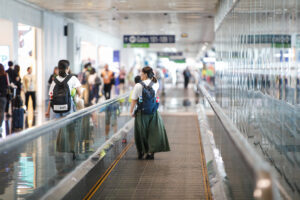
And from personal experience, since I started traveling regularly in July of 2024 almost every month for work until today, these changes have made small but meaningful improvements to average travelers alike.

